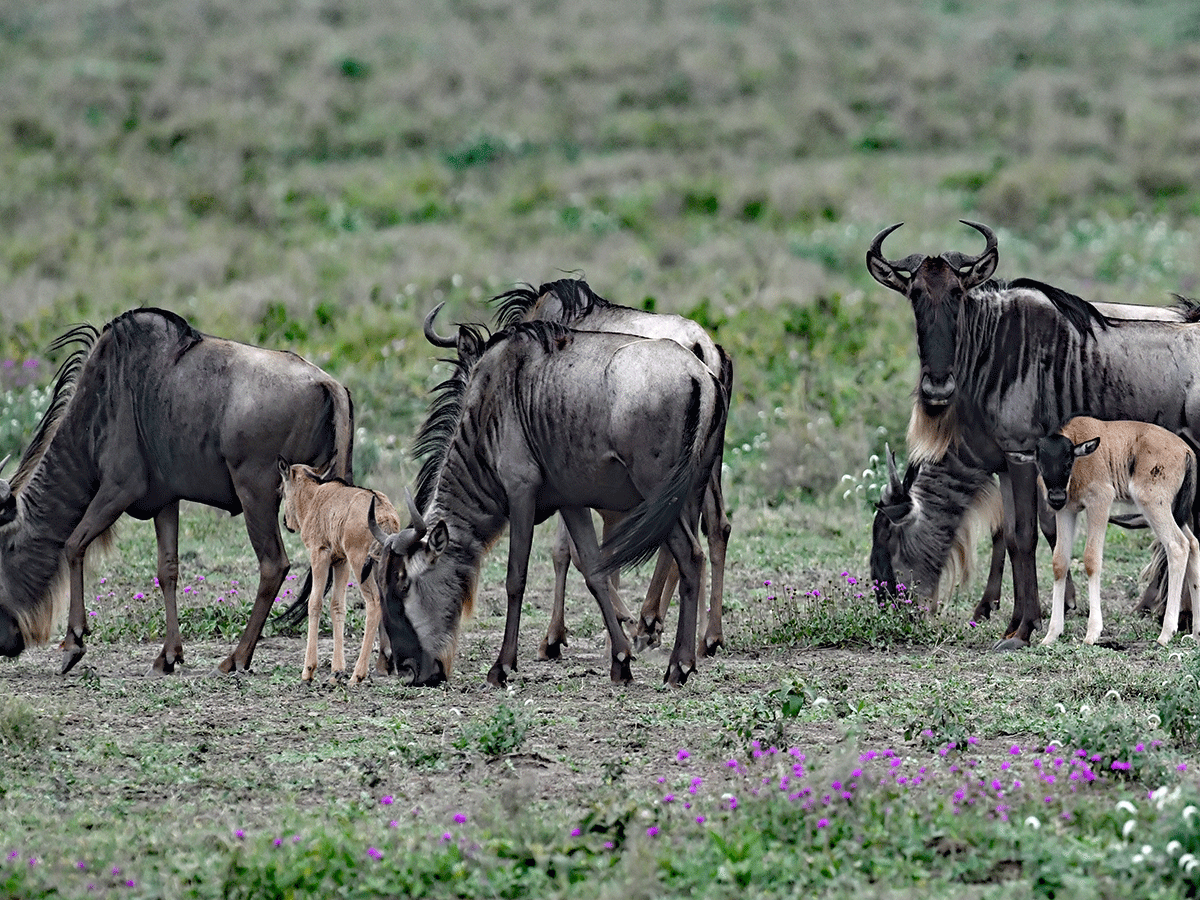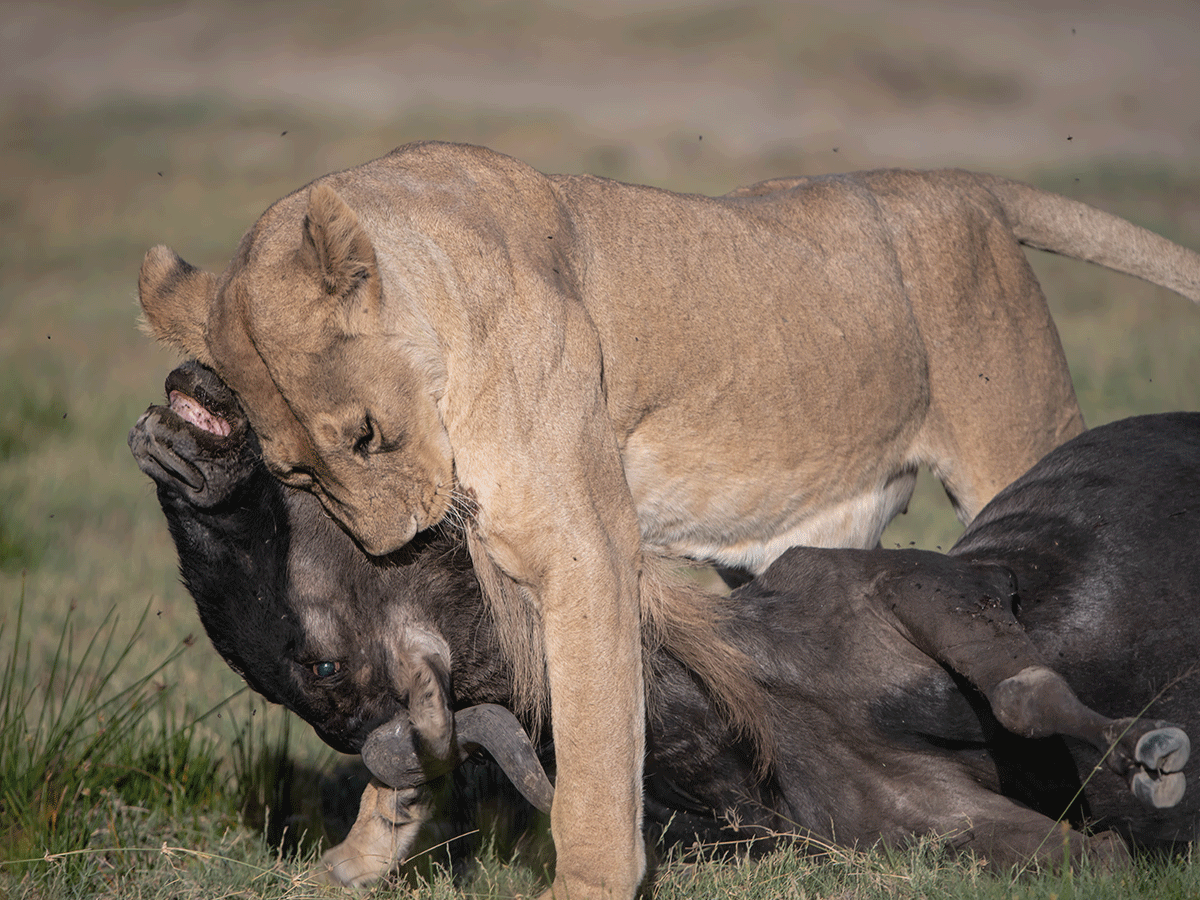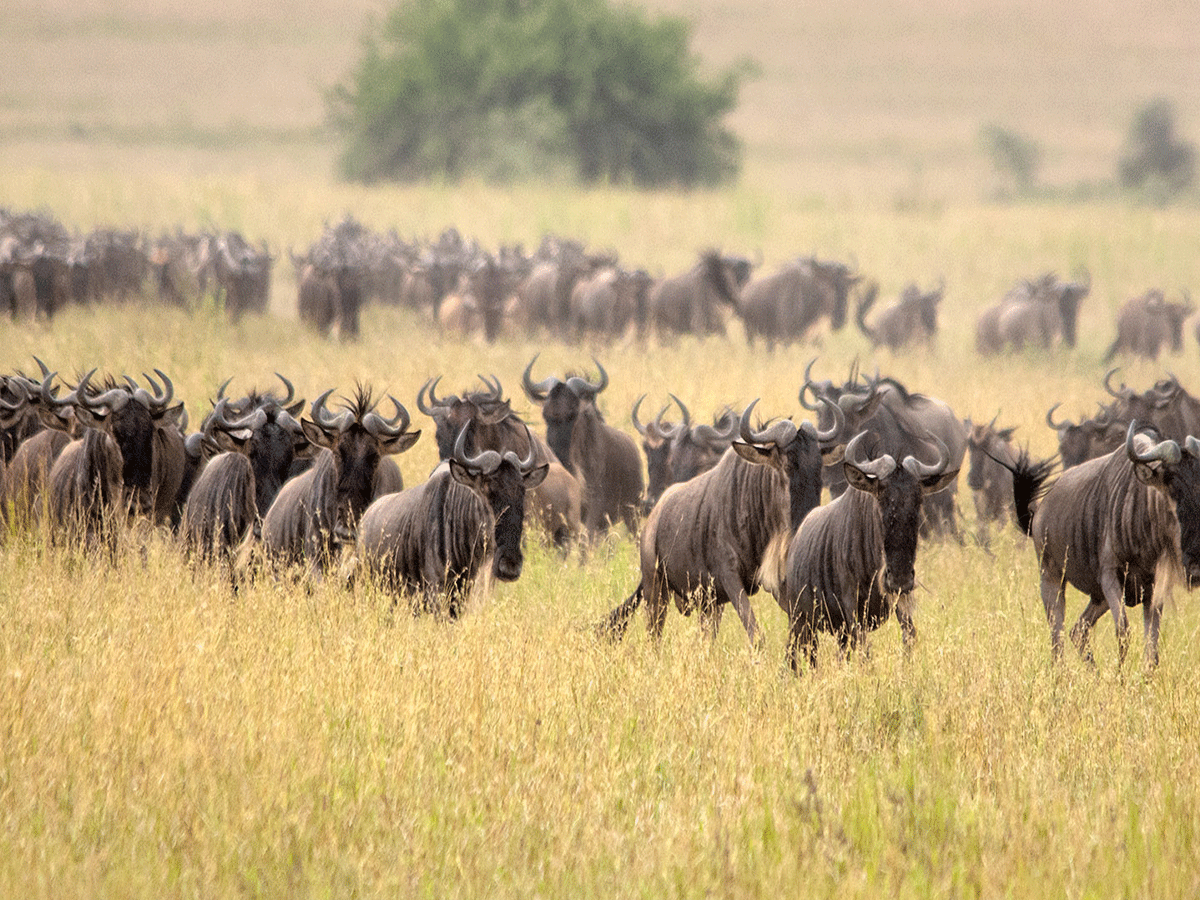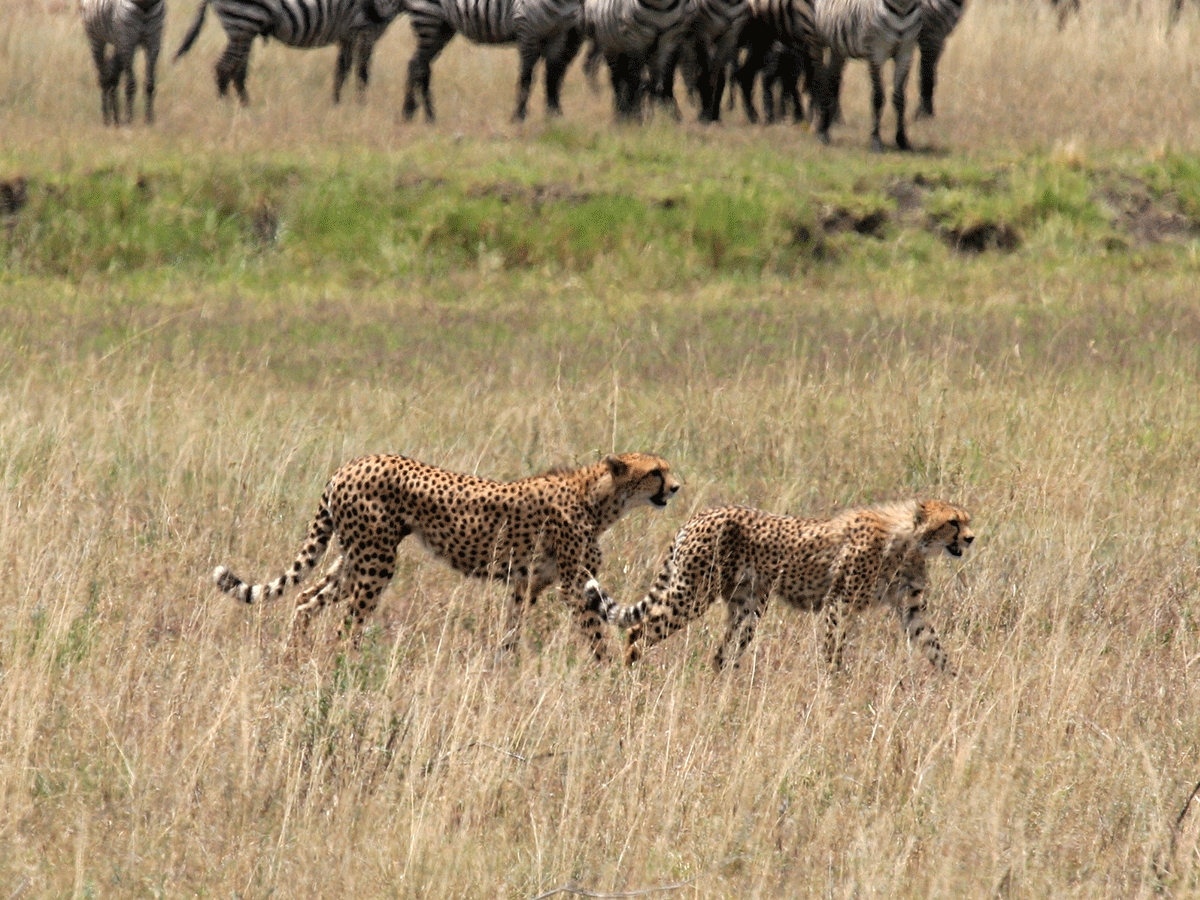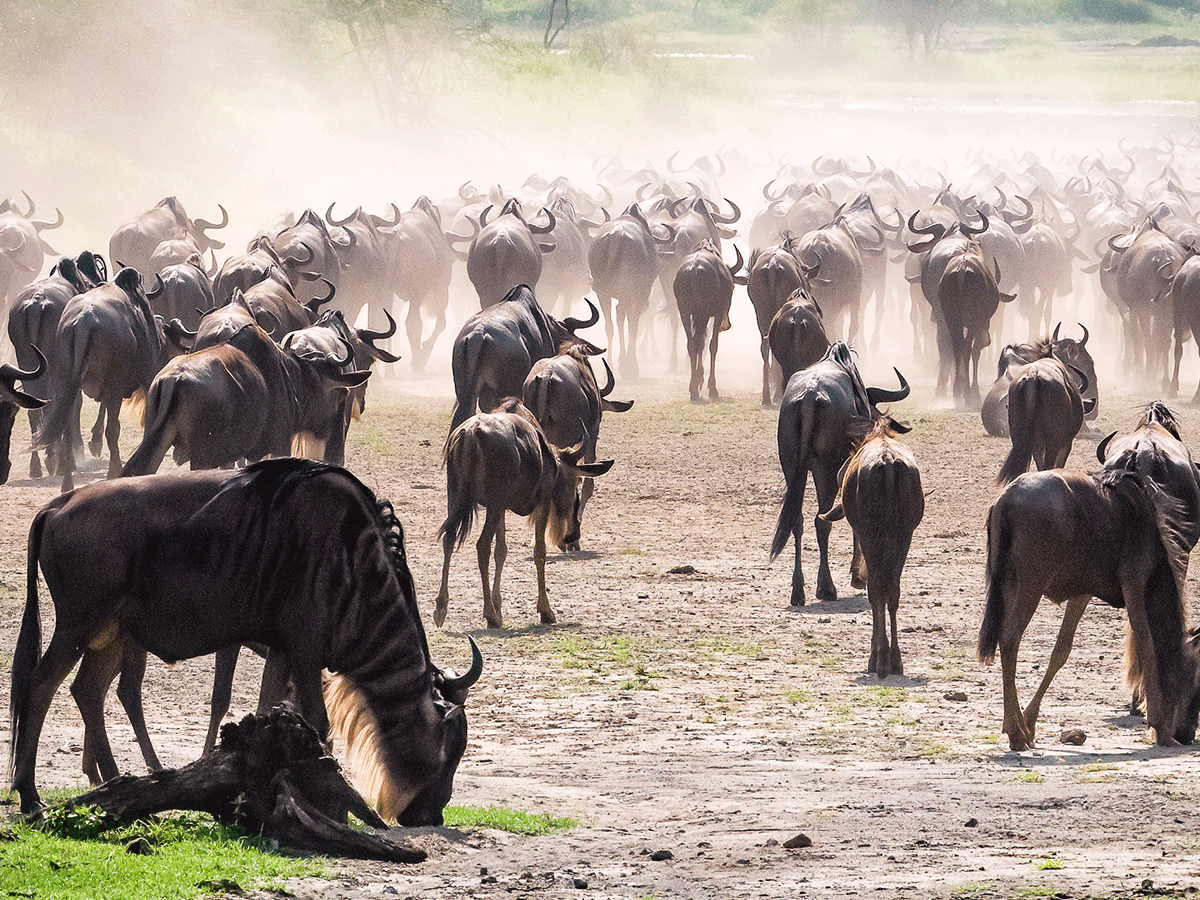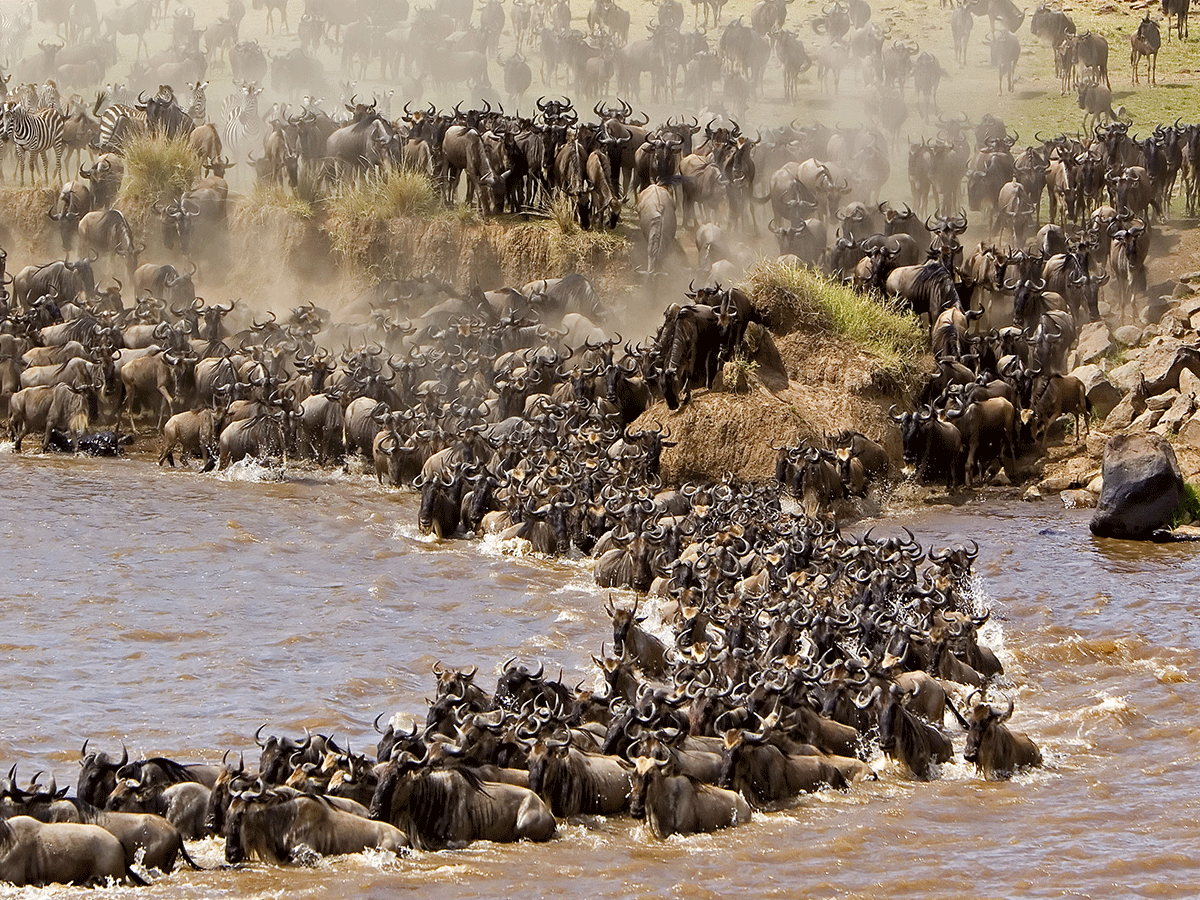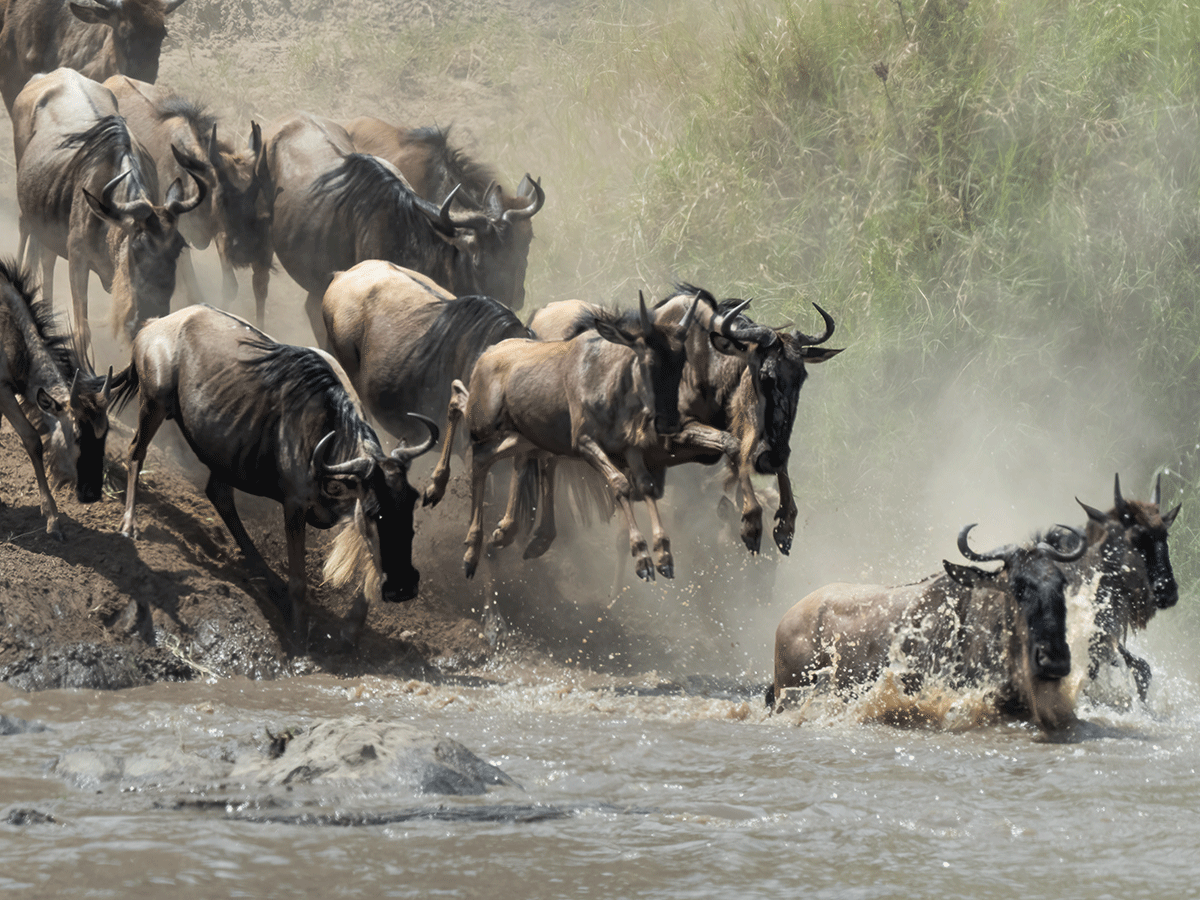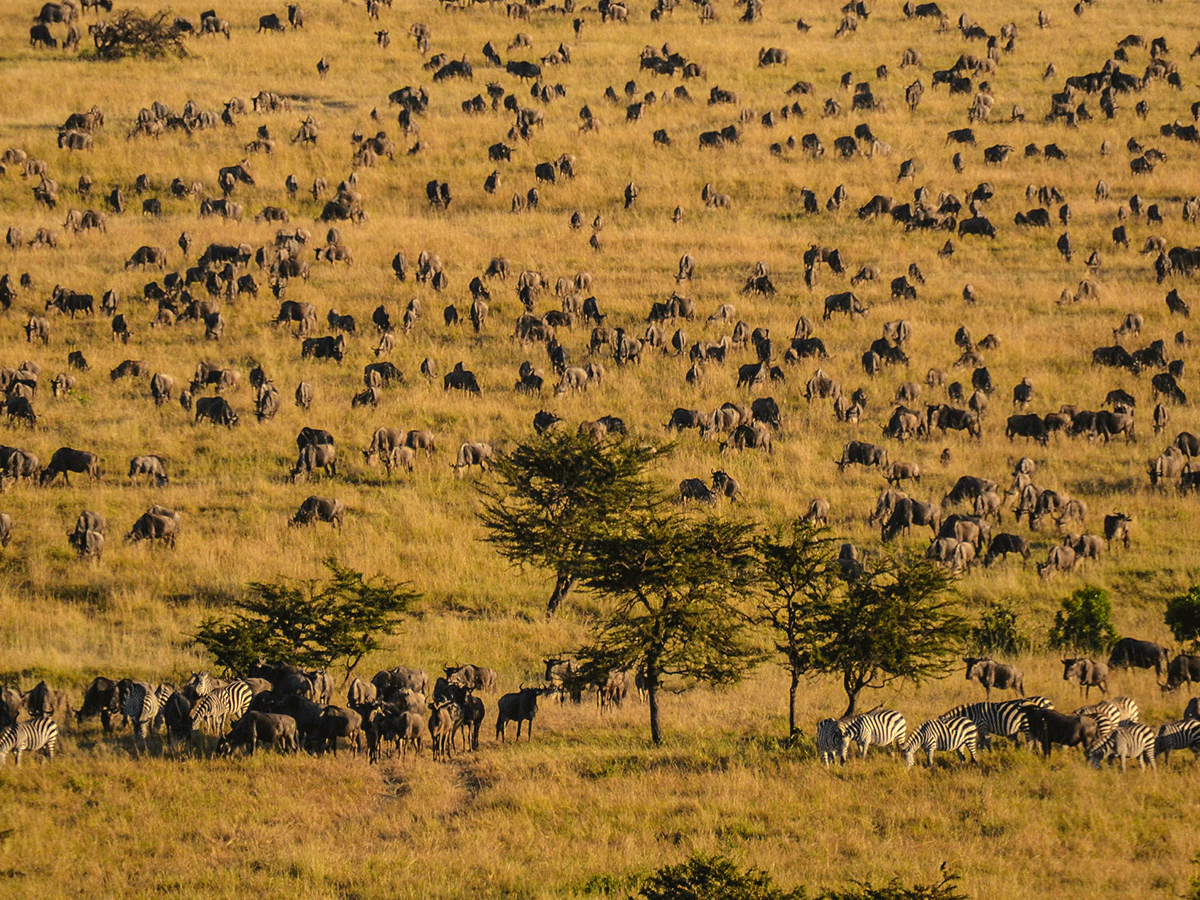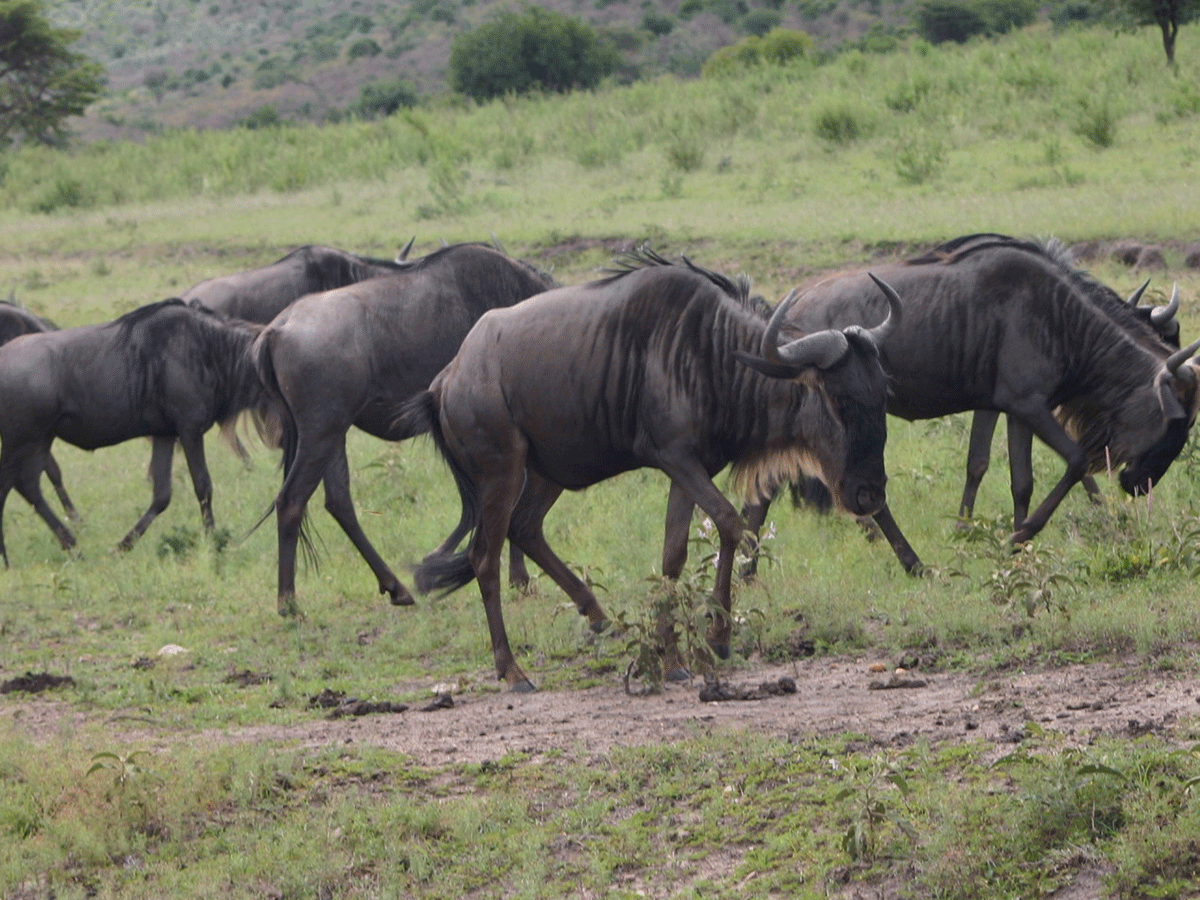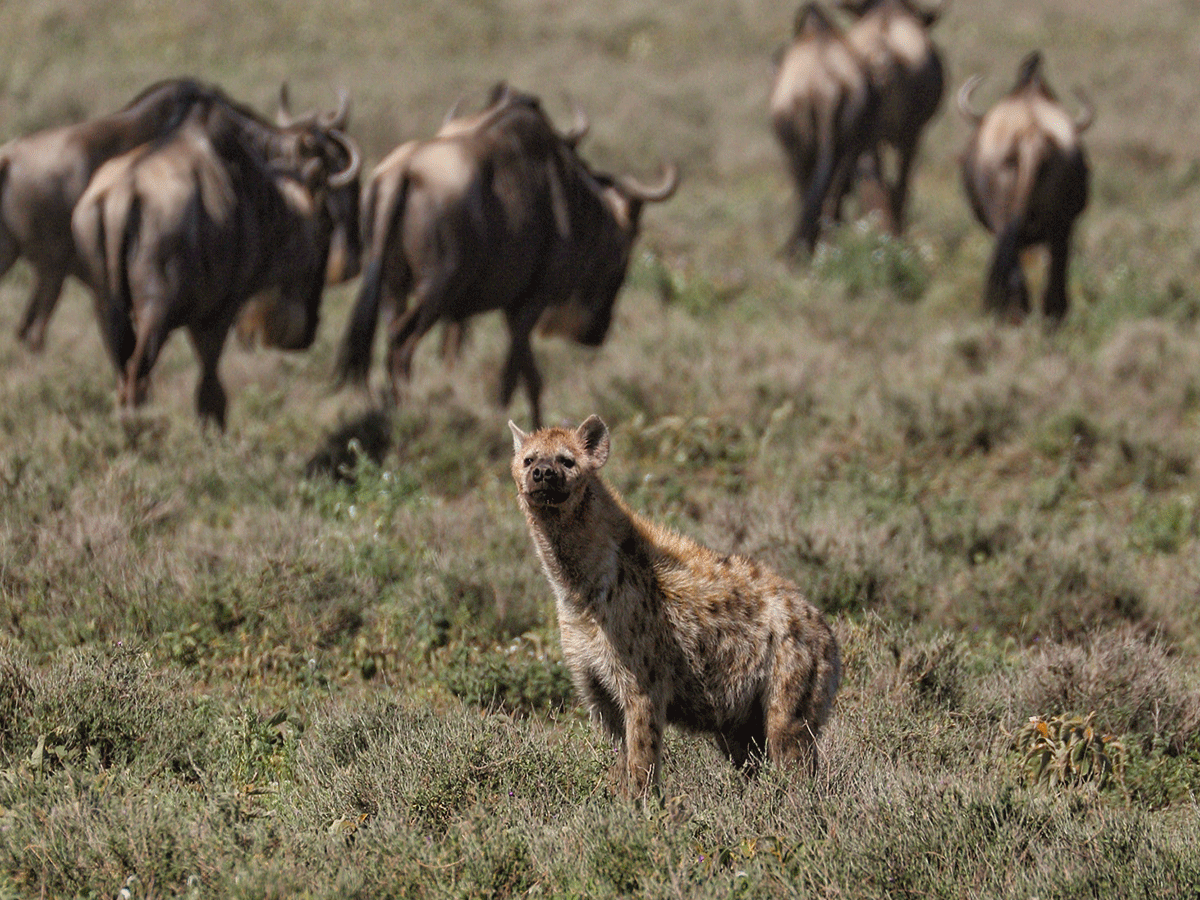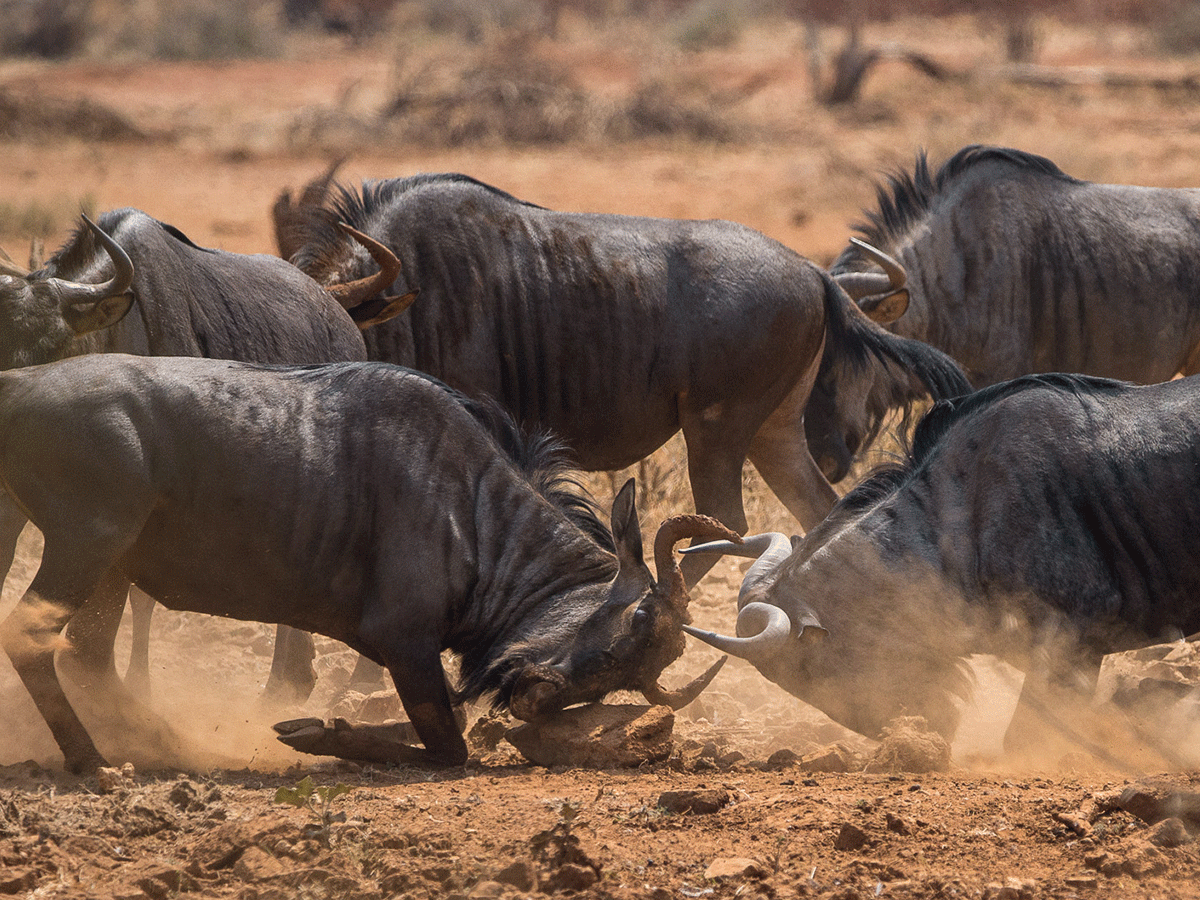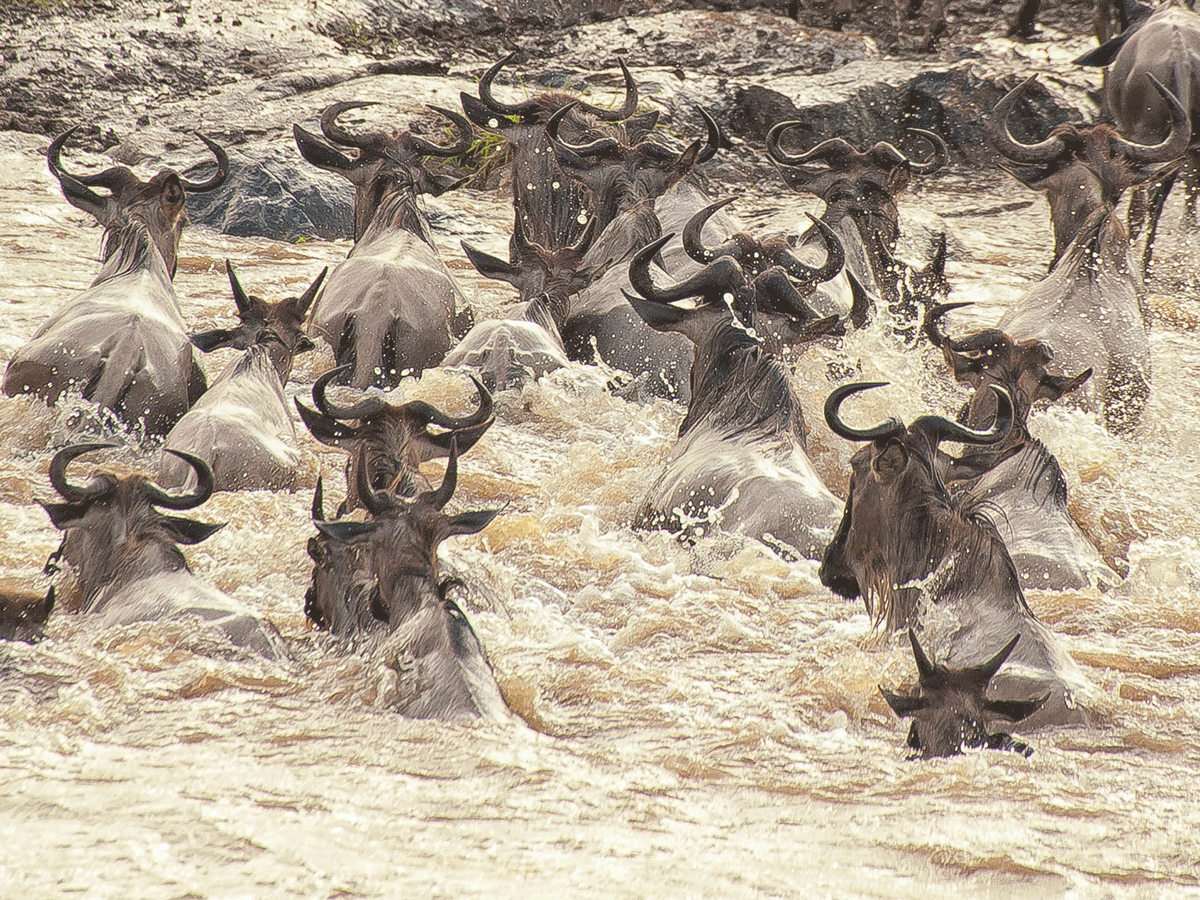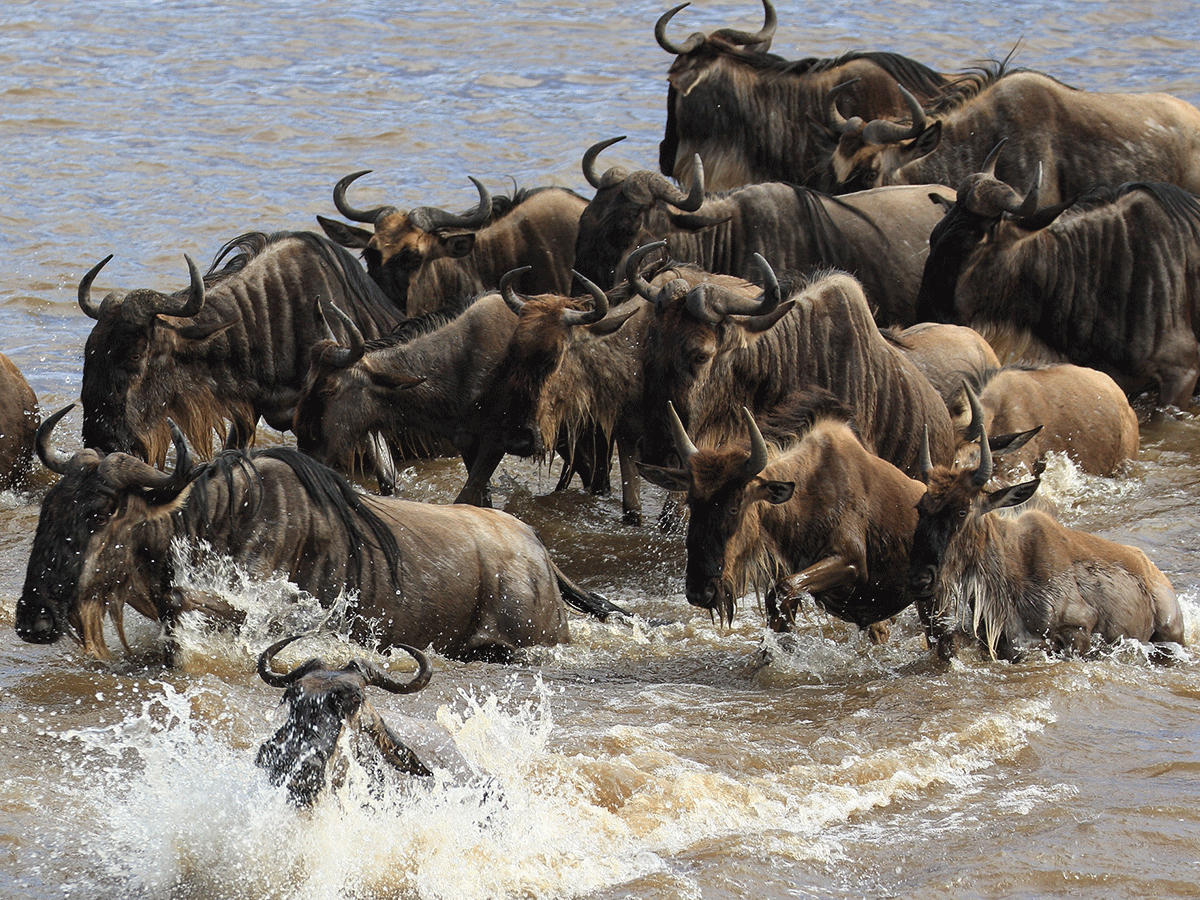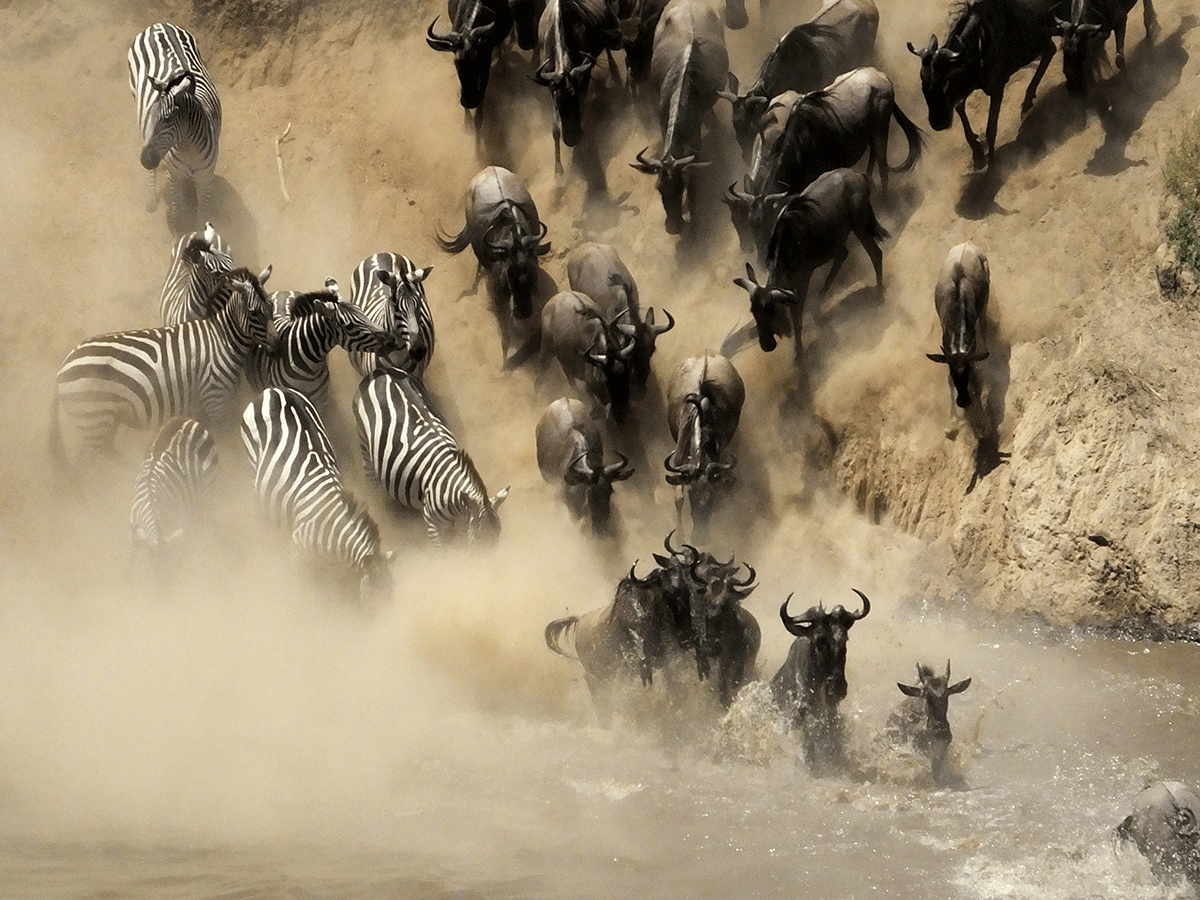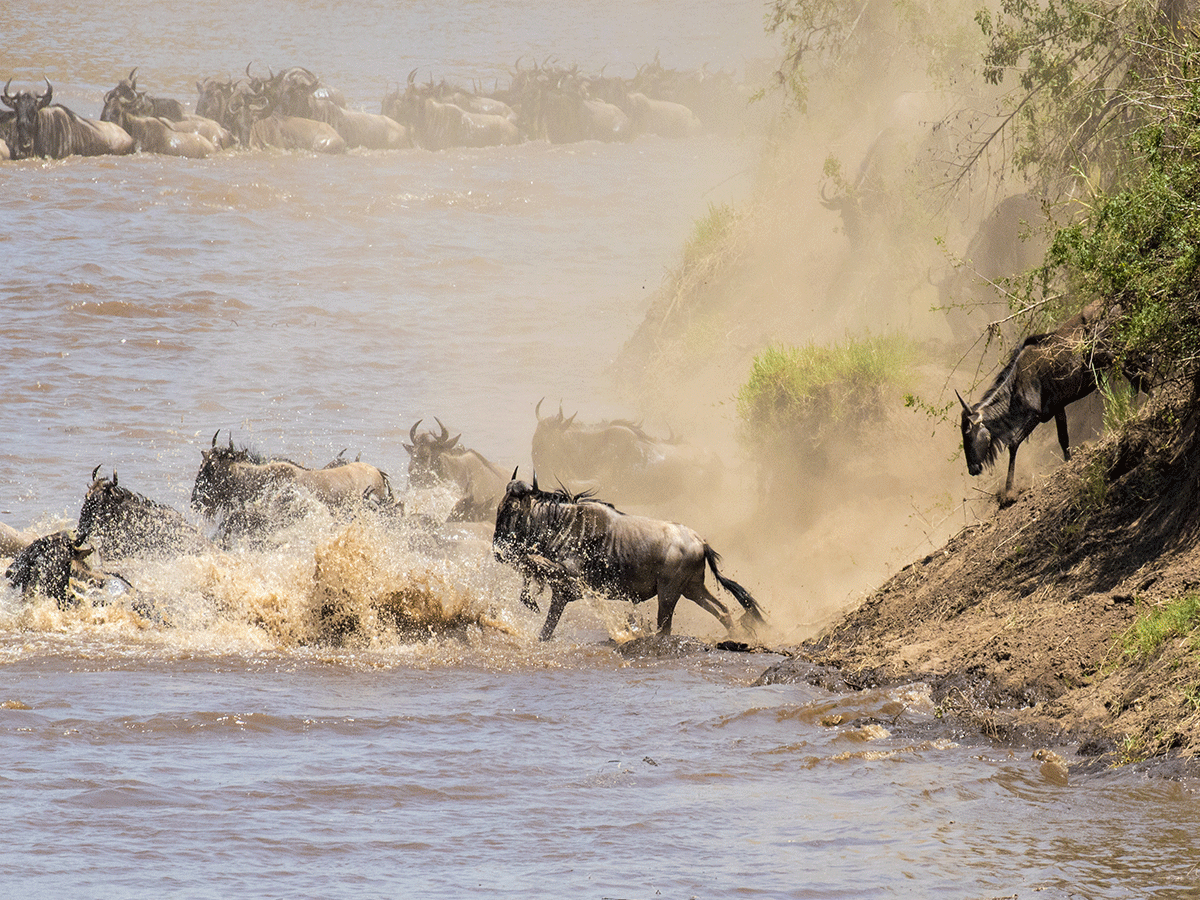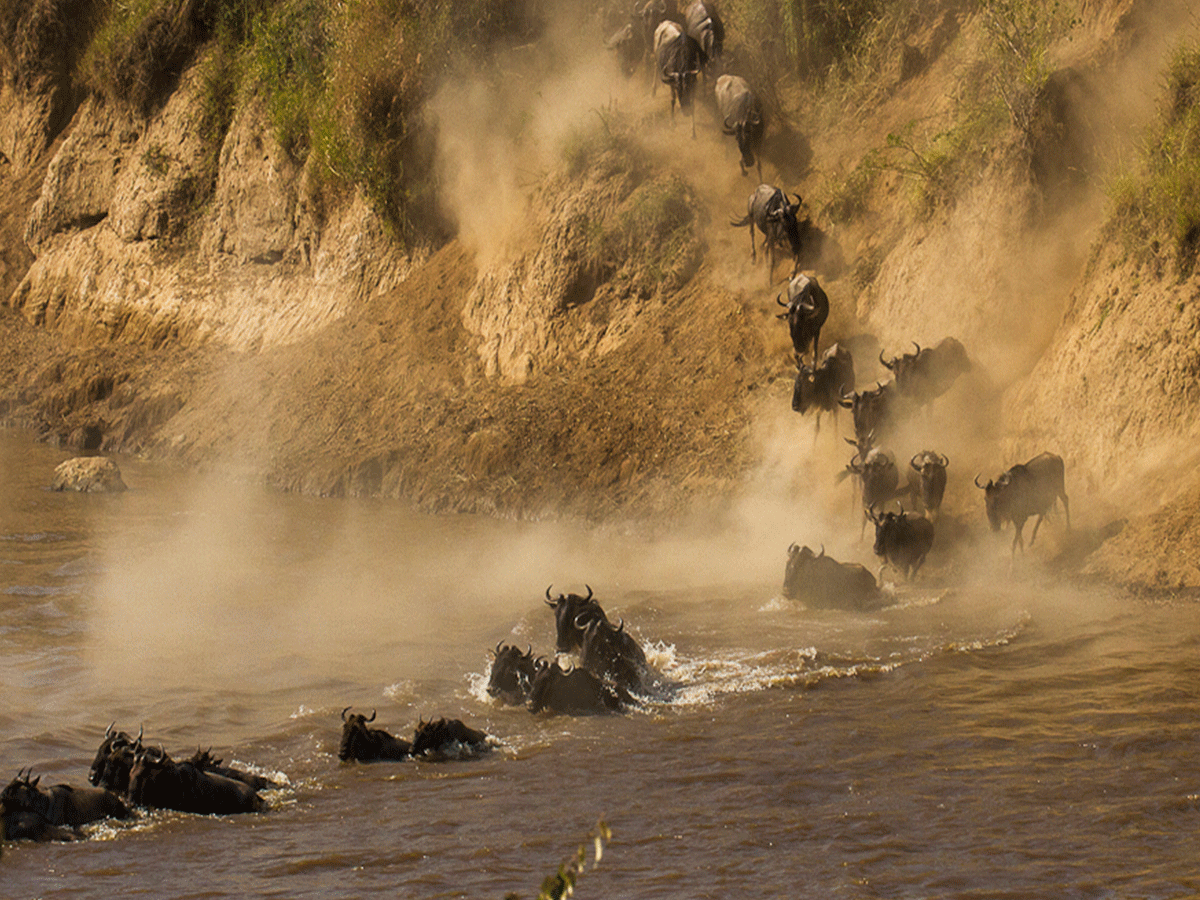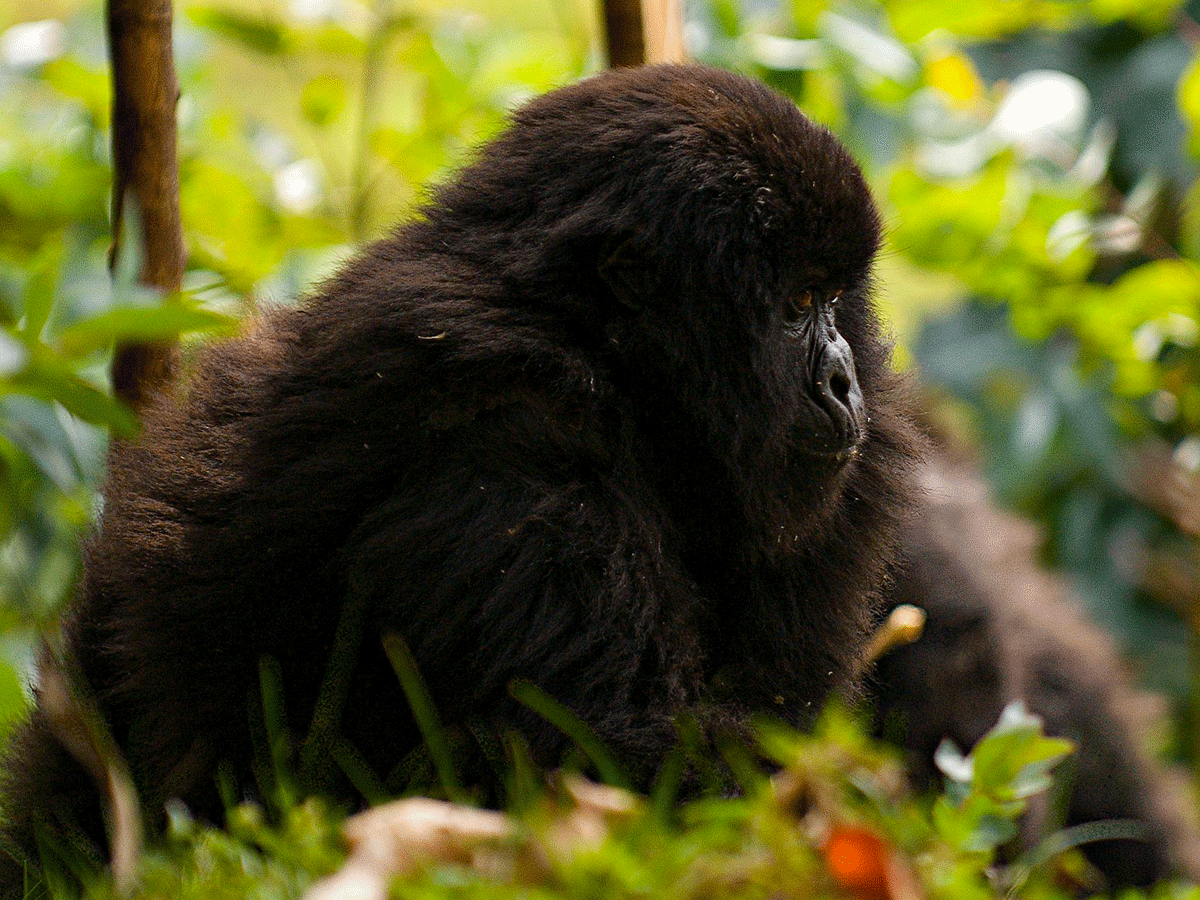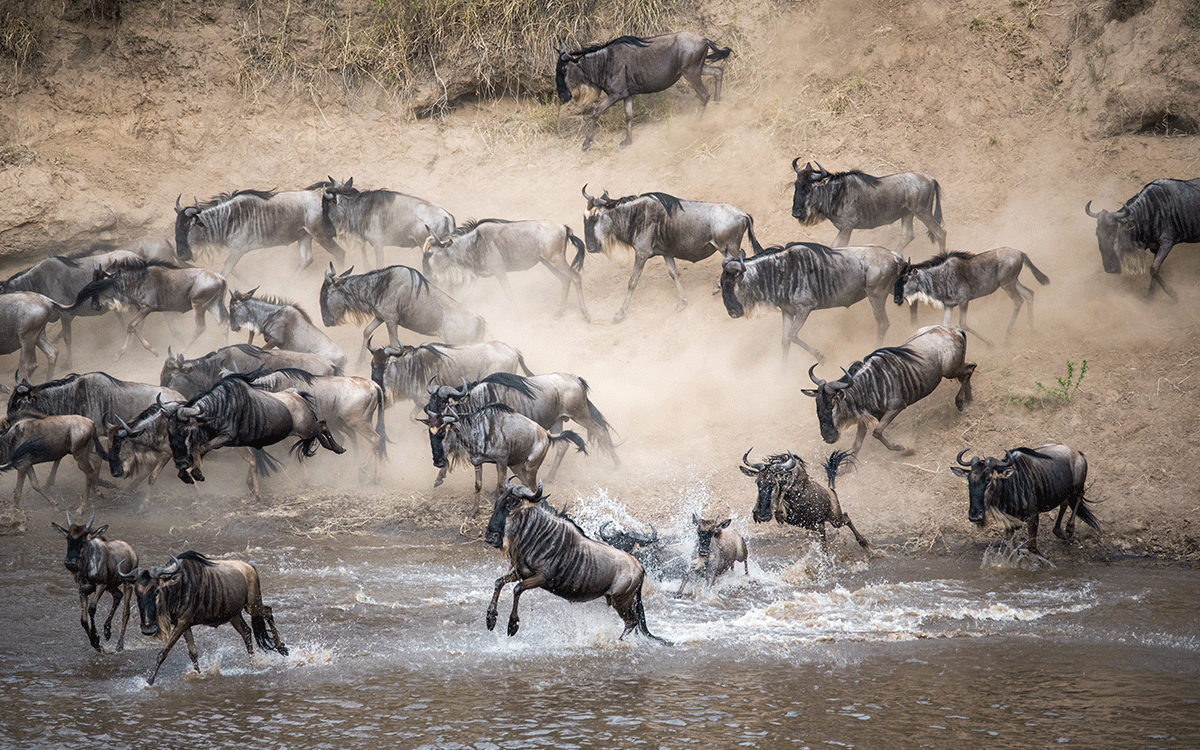Annual Wildebeest Migration Safaris

Annual Wildebeest Migration Safaris
Tanzania’s Serengeti and Kenya’s Masai Mara ecosystems form the backdrop to one of the most breathtaking events in the entire animal kingdom – The migration is even made more extraordinary by the supporting cast of predators including lions, leopards, hyenas, and cheetahs.
The Serengeti’s southern plains host the highest concentration of predators in Africa during the wildebeest calving season (January-March). The peak of the migration is the epic and spectacular Mara River crossing stage in the northern Serengeti with the raging Mara River the largest obstacle to the migration’s progress (July-September/ October depending on the rains).
With millions of Hooves tormenting the ground a thunder-like Noise is hard with the dusty cloud as the herds bunch up on the riverbank before taking the plunge; The Nile Crocodiles wait for the drama as the ambitious wildebeest struggle to reach fresh grazing plains in the Masai Mara. Little do they know; the infamous Mara lions form an intimidating viciously waiting across the plains.
Map showing the Annual Wildebeest Migration
The wildebeest migration is an annual mass movement of ungulates between Serengeti and Masai Mara and this is a continuous event that involves crossing the Mara River which is the greatest obstacle during the Migration and this is largely triggered by the need for water and green pasture and our guide will give you an insider of where the wildebeest are more likely to be during each month.
As the main herds continue north over the summer months, wildebeest mass on the banks of the Mara River in incredible numbers before the hardest single part of their long journey: a dramatic, life-or-death river crossing into Kenya.
The crossing usually occurs at Mara River around late July to August with parts of September and again on their return south, around the last two weeks of October through early November. Hence, the best times to track and see the annual wildebeest migration are in Serengeti in Tanzania and Masai Mara in Kenya.
CALL OR EMAIL
ENDLESS PLAINS AFRICA LIMITED
Africa: +256706070750
Overseas: +61427412130
safaris@endlessplainsafrica.com
a travel agent is available 24hrs
What our guests say about us…
START PLANNING YOUR SAFARI NOW!
Talk to one of our African adventure experts and let them tailor-make your safari
Month to month guide to Annual Wildebeest Migration
As the main herds continue north over the summer months, wildebeest mass on the banks of the Mara River in incredible numbers before the hardest single part of their long journey: a dramatic, life-or-death river crossing into Kenya.
The crossing usually occurs at Mara River around late July to August with parts of September and again on their return south, around the last two weeks of October through early November. Hence, the best times to track and see the annual wildebeest migration are in Serengeti in Tanzania and Masai Mara in Kenya.
The wildebeest
Wildebeest, also called gnus, are members of the antelope family. They are related to oryxes and gazelles. A wildebeest can grow to 2.4 meters (8 feet) in length, and weigh up to 270 kilograms (600 pounds).
Which Animals Participate in the Great Wildebeest Migration
Over 1.6 million wildebeest will lead the way as the rains approach in the Serengeti in late October or November and this is accompanied by 400,000 Thomson’s gazelle, 300,000 Zebra, and 12,000 Eland. These are the main migratory and they cross the ranges of over a quarter of a million other resident herbivores and, of course, carnivores. The lions, hyenas, leopards, cheetahs, and lesser predators will always follow the migration and this will be observed as more numbers of predators are seen following the wildebeest migration at the beginning of the circle.
The wildebeest calving season
Annual wildebeest migration usually starts in January and February, when the wildebeest cows drop their young at the same time or rate that sees some 7000 to 8000 calves are born every day and within two to three weeks after eight and a half months after the rutting season.
Life of the wildebeest calves
Newborn wildebeest calves gain coordination faster than any other ungulates and are usually on their feet two to three minutes after birth. It can run with the herd at the age of five minutes
The start of the wildebeest circle
Towards the end of the short dry season, around March, the short-grass plains of the southern most Serengeti begin to dry out and the wildebeest begin their journey towards central Serengeti
How do the Wildebeest know which way to go?
There are at least two possible answers, according to behaviourist and ecologist Harvey Croze, co-author of The Great Migration. The wildebeest’s journey is dictated primarily by their response to the weather; they follow the rains and the growth of new grass. And, although there is no scientific proof that this is true, it seems that they, and other animals, react to lightning and thunderstorms in the distance.
Wildebeest rutting season
the annual rut, with half a million cows, mated in less than a month as the herds consolidate in the woodlands and on the plains of the Serengeti’s Western Corridor. The peak of the rut seems heavily influenced by the state of the moon, with the full moon in May - June being a good bet for anyone seeking the most action.
The journey to the Mara River through Lakes and Rivers in Serengeti
From the western Serengeti, the herds head north, following the rains (or their effects) into Kenya’s Masai-Mara Game Reserve. On their trek, the wildebeests’ path is cut several times by rivers: in the Serengeti by the Mbalagweti and the Grumeti, and in Kenya by the Mara. For most of the year, these rivers are relatively placid, but they can become violent to currents in response to rainfall in their catchment areas, and then they present major obstacles to the progress of the wildebeest.
The Actual Mara River crossing
Wildebeest arrive at the Mara River in tens of thousands and gather waiting to cross. For days their numbers can be building up and anticipation grows but many times, for no apparent reason, they turn and wander away from the water’s edge. Eventually, the wildebeest will choose a crossing point, something that can vary from year to year and cannot be predicted with any accuracy. Usually, the chosen point will be a fairly placid stretch of water without too much predator-concealing vegetation on the far side, although occasionally they will choose seemingly suicidal places and drown in their hundreds.
Some of the common predators during the Annual Wildebeest migration are Lions, cheetahs, Hyenas, leopards, and jackals will follow along together with vultures.
Closing the Circle of the Wildebeest migration
By late October, when the first short rains are falling on the Serengeti’s short-grass plains, filling seasonal waterholes and bringing new flushes of growth, the wildebeest start heading south again. The herds trek down through the Eastern woodlands of the Serengeti, some 90 per cent of the cows are heavy with the new-season young ones. Tightly grouped as they pass through the wooded countryside the wildebeest scatter and spread out again once they reach the open plains and that marks the end of the circle. By January and February again the wildebeest start a new circle.
Actual timing of the Masai mara wildebeest crossing
The best time to witness the migration from the Serengeti to Masai Mara is between mid-July to September. During this period, the greatest spectacle on earth unfolds right before your eyes. Over a million wildebeest, zebra and gazelles make their way to Masai Mara by crossing the crocodile-infested Mara River in search of greener pastures.
The exact timing may change from year to year as it is a spontaneous event influenced by rainfall patterns and subsequent grazing opportunities. The animals are constantly on the move all year round. They stay in the Masai Mara from July to October before gradually migrating back to the Serengeti in November.
Annual Wildebeest Migration Events
Best places to stay during the Annual Wildebeest Migration
The wildebeest migration is an all-year movement of over 2 million wildlife and where to stay depends on what you would like to experience as the migration is broken down into Calving season, wildebeest rut and the River crossings our guide below will give you an idea of where to stay at what month of the year.
| ACTIVITY | MONTH | WHERE TO GO |
| Wildebeest Calving Season | February to March | Southern Serengeti |
| Rutting Season | April to May | Western & Central Serengeti |
| Grumeti River Crossings | May to June | Central Serengeti |
| Mara River Crossings | July to August | Northern Serengeti & Masai Mara |
| On the Move | November to January | Masai Mara & Northern Serengeti to Southern Serengeti |
| Grazing | September | Masai mara |
| Mara River crossing | October –November | Mara River |



